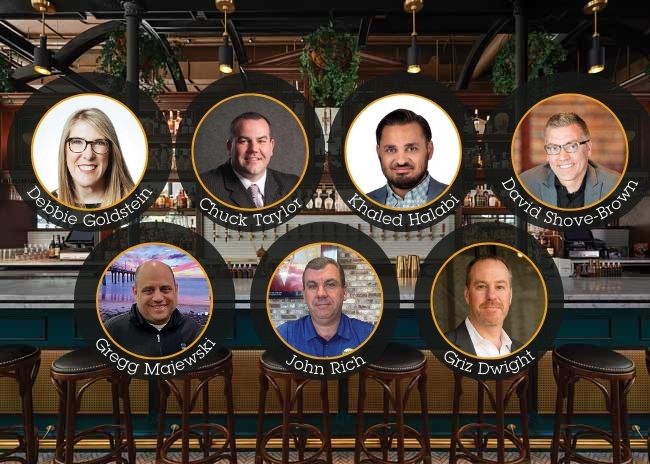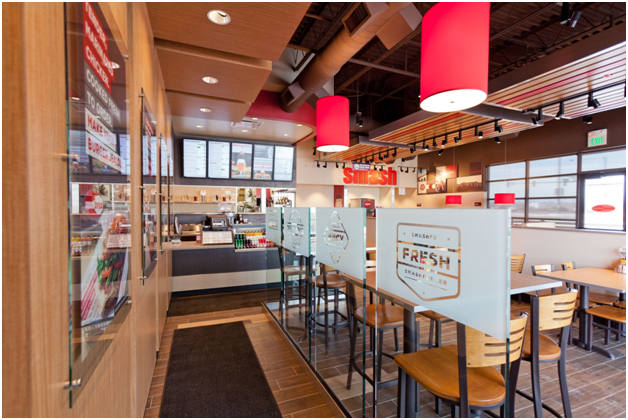“Your project is going to take three months longer than expected,” is not a sentence anyone relishes hearing, and it’s not news any project lead wants to deliver.
However, tough conversations are unavoidable in business, especially one with as many moving parts and possible derailments as the restaurant industry.
Avoiding difficult conversations can often make situations worse. The only thing a responsible team can do is to have them — and to conduct them as well as possible. Chuck Taylor, director of operations for Englewood Construction, Lemont, Illinois, agrees. “The best way is to rip the Band-Aid off, and don’t be afraid to deliver bad news. No one benefits from kicking this can down the road; it’s got to be exposed right away.”
“I always like to talk to people by phone or in person, but not email or text message because that can get misinterpreted,” says Griz Dwight, principal and founder of GrizForm Design Architects, Washington, D.C. Taylor is also a proponent of avoiding text and email: “Tone is not well defined in the written word.” He notes that a curt email can come across as an accusation of someone screwing up instead of a call to rally the team to come together and fix the problem.
Khaled Halabi, design director, Cini-Little International, Germantown, Md., says if you send an email or a text to deliver difficult news, “you’re kind of setting yourself up to lose.” If Halabi and the other party can’t manage to get together in person, he’ll do a video call. “You need to give a situation the respect it deserves,” he adds.
“The broad school of thought is that email is meant for transactions and information exchange,” says Debbie Goldstein, who teaches negotiations at Harvard Law School and is the CEO of Triad Consulting Group, Somerville, Mass. “Writing is a clunky instrument, so the ability to converse is important. And email can be lonely, because you’re not in it with someone, you’re alone at your computer.”
 We asked seven industry professionals for their tips on how to handle tough conversations.
We asked seven industry professionals for their tips on how to handle tough conversations.
Difficult People
David Shove-Brown, AIA, NCARB, partner, Washington D.C.-based architecture and design firm //3877, finds the most difficult people “are folks that don’t actively listen.” Those folks don’t truly absorb information and give feedback on it, Shove-Brown notes. Because of this, he often writes up meeting notes and sends them via email, “so you can at least say you’ve had this conversation. A lot of it is covering your ass.”
Shove-Brown also gets frustrated with “anyone who watches HGTV [and] folks that have some warped sense of reality or unrealistic expectations [about projects].” Those who come to projects without much experience but with a lot of expectations, he says, are unwilling to trust his team and their expertise. This situation has become worse because of the influence of the internet, he says. “People have information at their disposal but don’t necessarily go to the next level to see if it’s correct.”
The most common difficult conversations he has are about costs and schedules, Shove-Brown says.
John Rich is a franchise consultant with The Toasted Yolk, Houston, Texas. His difficult conversations are mostly with franchisees, usually because they’re not in compliance with brand standards.
If he finds something noncompliant, he simply has a conversation with the store management and reports it to the Toasted Yolk. However, if it’s a transgression following an audit, Rich sits down with the unit owner “to have a stronger conversation.”
Dwight’s hardest conversations are with clients “because they’ve hired you to do something, and if it’s difficult that means something’s not going well,” he points out. Most difficult conversations center around project timing and money, he says. If the conversation is about materials or availability, it’s generally out of his control, but if his company didn’t get something done, causing the project to take longer, it can be hard, he says.
Halabi’s hardest conversations are mostly with architects, and those are most frequently about budgets. But lead times are “very tough discussions to have, too,” he says.
 John Rich, franchise consultant with The Toasted Yolk (pictured), says it’s important to have open conversations with franchisees. Image courtesy of The Toasted Yolk
John Rich, franchise consultant with The Toasted Yolk (pictured), says it’s important to have open conversations with franchisees. Image courtesy of The Toasted Yolk
Conversation Prep
Hard conversations shouldn’t be off the cuff. First, understand the problem and what you want to do about it, Goldstein says. Then it’s time to approach the person. “The more thoughtful you are in your prep, the better the outcome,” she says.
Run through some phrases with a trusted colleague or friend or even in front of the mirror. “I’m not a fan of scripted conversations because they can feel inauthentic, but having a first sentence prepared, or some key phrases, can be quite powerful,” she points out.
Rich plans some key points he wants to make and might make a few notes on paper. “When you walk in with a notepad or a piece of paper, they perceive it as serious,” he says.
And don’t forget to have empathy for the person you’re speaking with. “Put yourself in their shoes. How they might feel when they receive this news is critical,” Goldstein says. “So, when you enter the conversation, you’re more likely to be curious and empathic.”
The Conversation
When having a difficult conversation, it’s important to be direct. “Telepathy is not an effective communication strategy,” says Goldstein. Instead of hinting about a problem, it’s best, she says, to just do it.
And don’t forget that the other person is not the problem; what they did, or caused to happen, is the problem, so don’t attack the person, she advises. Occasionally the person is the problem, “but you can still be collaborative even when there’s strong emotion,” she says.
Once you’re in the conversation with the other person, be clear what the problem is, what some solutions are, and, by the end of it, what you and the other person have agreed upon.
Shove-Brown keeps his goal in the back of his head through these conversations to ensure he achieves it. And don’t meander, he adds: Stick to the point and have a focused conversation.
Dwight likes to get the news out first. “If you tell a client everything you’ve done that’s wrong, it diffuses the situation,” he says, “because they don’t have anything else to add.”
Dwight might also say he’s going to come back with a plan to solve it. “If they know you are actively working toward a solution, that helps. It also helps if you say you’re going to have a solution by a certain date.”
Rich likes to get right to the point. “I don’t feel the need to worry about offending them. I’m coming from a standpoint of caring and concern. It’s not a person driving this; this is about brand standards.” He wants the franchisee to be on his side and part of the solution. “If it’s their idea, it’s going to be more successful. If it’s the first time, you want to help them come up with solutions; but if it’s the third time, now they have to follow what I’m saying.”
Halabi likes to address problems before “they morph into something bigger.” And he likes to come to the table with a few solutions. “Then you can start the creative juices flowing,” he says. “And the other person feels like they’ve contributed.”
Follow-up is just as important, Halabi says. “It’s part of the solution to have a schedule and a set of milestones and goals.” Look ahead and schedule a date to reconvene, so everyone knows the timeframe for meeting goals.
Don’t sugarcoat bad news, Goldstein advises. “Tell the person whether [the problem] is fixable or negotiable or final and then let them have their reaction,” she says. Don’t try to control the other person’s reaction, she points out. “We’re so frightened of how they’re going to take the news that we slink in or slink out.” Instead, she advises, “prepare yourself for some discomfort. You can’t go swimming without getting wet.”
And don’t forget to provide relevant information. “People really care about the why. If you can, offer the cause, such as why is this going over budget, or past deadlines, and why we can’t do what you’re asking,” says Goldstein.
 Griz Dwight of GrizForm Design Architects, designer of Dauphines (pictured) says the hardest conversations are with clients when it involves project timing and money. Image courtesy of GrizForm Design Architects
Griz Dwight of GrizForm Design Architects, designer of Dauphines (pictured) says the hardest conversations are with clients when it involves project timing and money. Image courtesy of GrizForm Design Architects
Internal Conversations
Conversations with employees within your own firm can be even more difficult than chats with outsiders. Performance-based issues are tough to talk about, “especially in a small office where you know everybody,” says Shove-Brown. In these situations, he says, make sure the person you’re having the conversation with knows it’s not that you don’t like them, the issue is that they need to improve some aspect of their work performance.
Gregg Majewski, founder and CEO, Craveworthy Brands, Chicago, Ill., also finds his hardest conversations are internal and must be approached carefully. “If you do it right, you can build a person up and continue to develop them. If you come in too harsh, it can backfire,” he says.
Majewski suggests mixing in some good with the bad, so you don’t completely demoralize a staff member. “People on your team are the hardest because there’s the relationship: You care about them and want them to be successful. So, my role is to give them the tools they need.”
Be direct, Majewski says, and tell them what they did wrong, but leave them with something positive — something great they’ve done, too.
Majewski tries to keep an open relationship with his employees to make conversations easier. And if there’s a problem, he jumps in immediately to talk to the employee “because the person usually knows it’s coming,” he says.
At the end of the day, tough conversations are always going to be needed at some point. Goldstein is a firm believer “that having a conversation can really enhance a relationship — it means you are willing to problem-solve together.”
Regardless of how bad the news, Taylor says, “I continue to surprise myself about how relieving it is to have these conversations. You’re still dealing with the problem, but it’s a weight off.”



